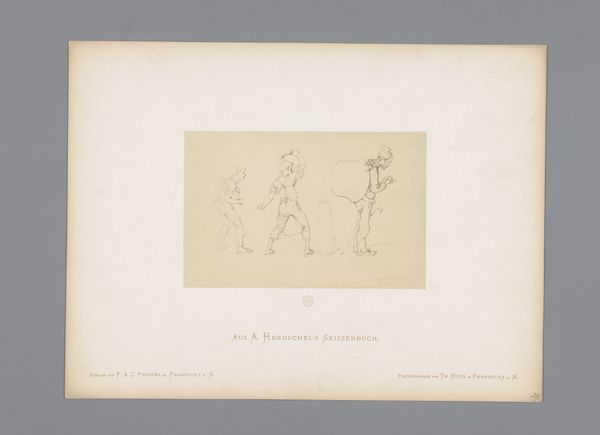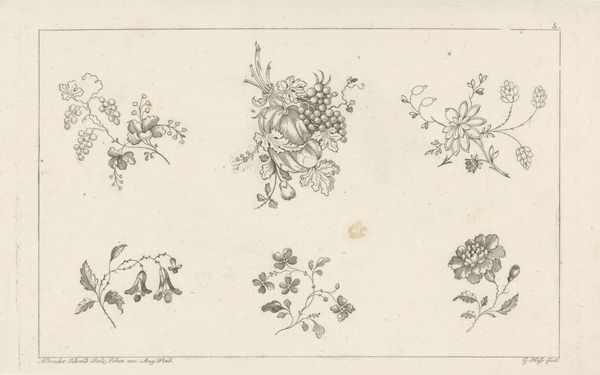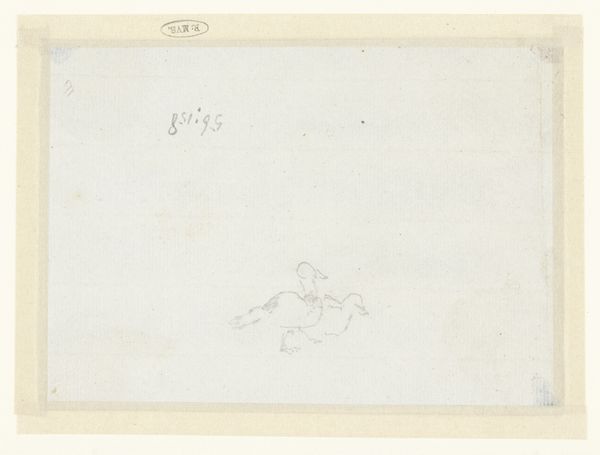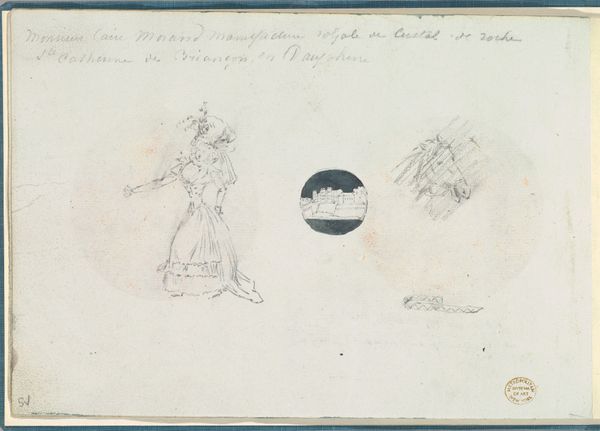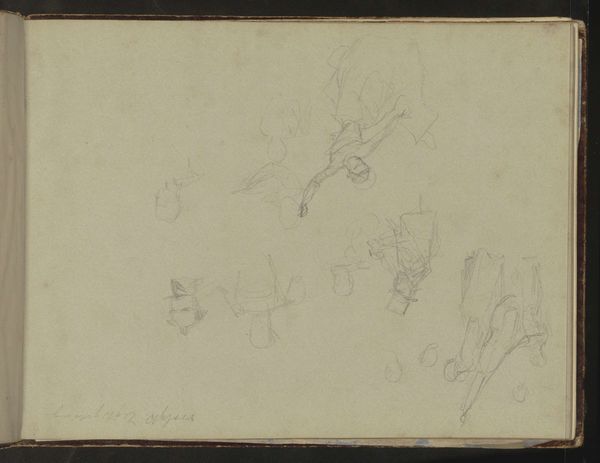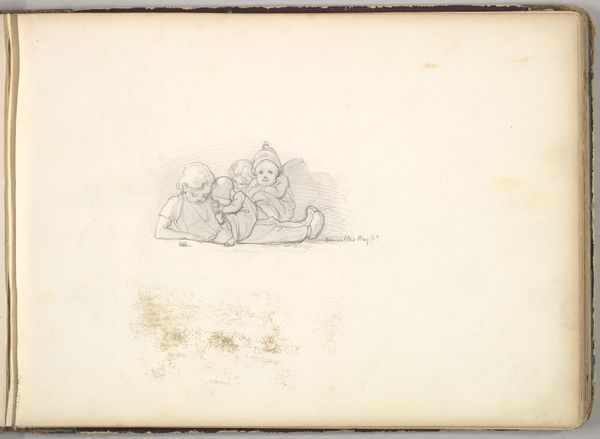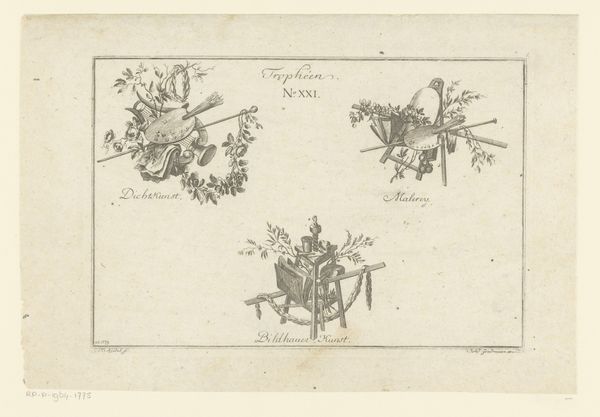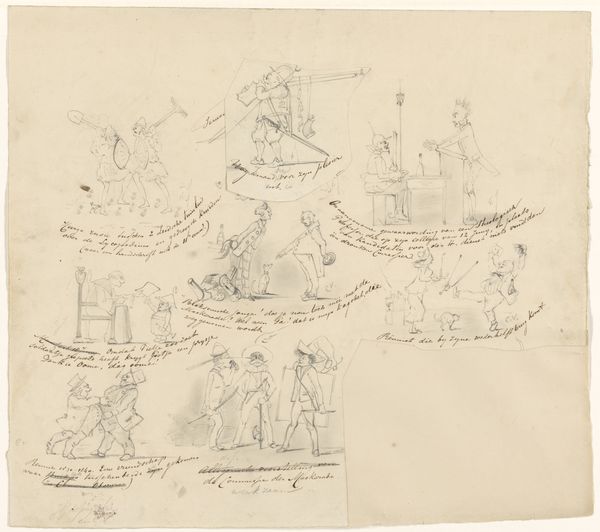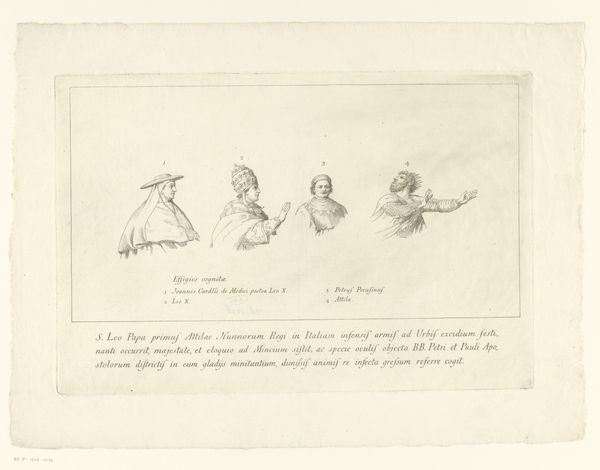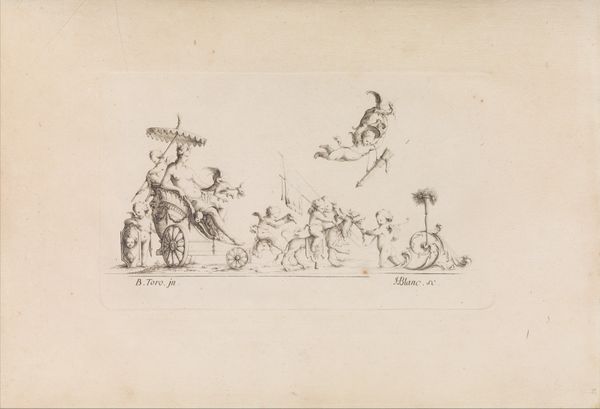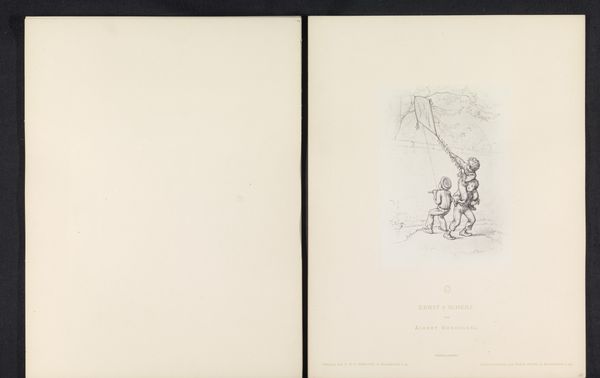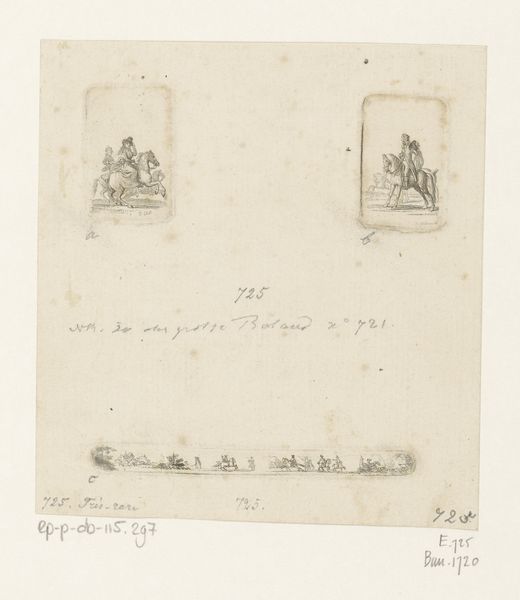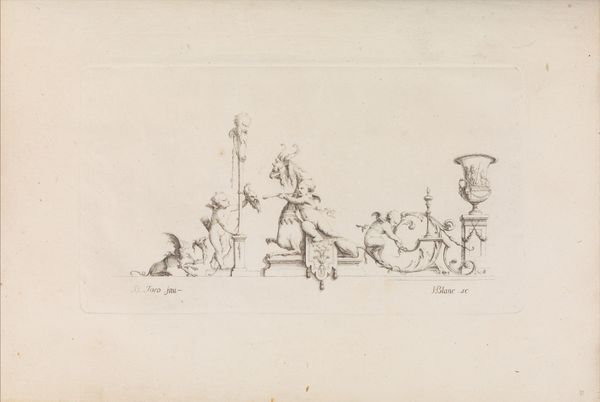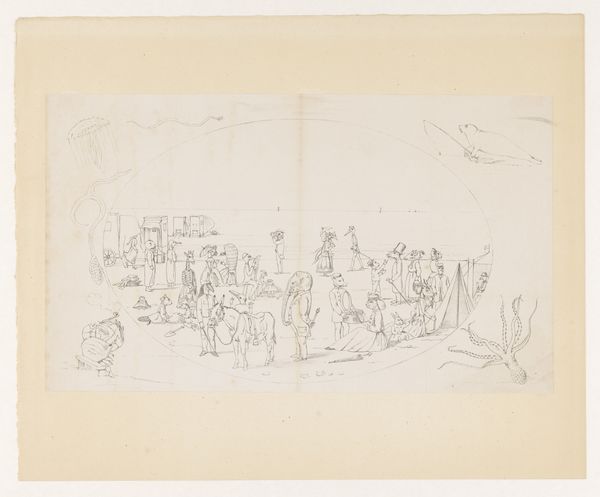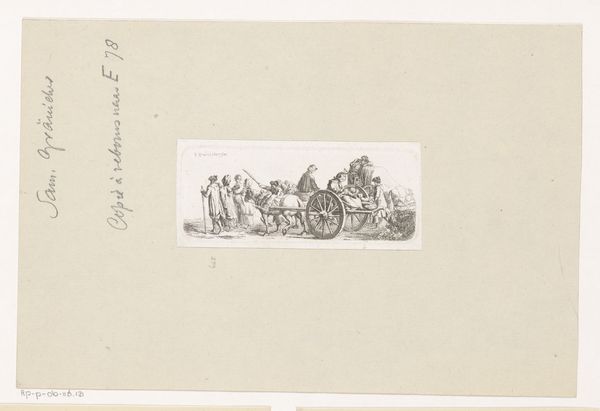
Sleutel bij de prent van het Franse leger dat de lunet van Saint-Laurent ondermijnt, 13 december 1832 1832 - 1833
0:00
0:00
drawing, paper, ink, pencil
#
drawing
#
paper
#
ink
#
romanticism
#
pencil
#
cityscape
#
history-painting
Dimensions: height 180 mm, width 298 mm
Copyright: Rijks Museum: Open Domain
Curator: This drawing at the Rijksmuseum, created by Jean Pierre Marie Jazet between 1832 and 1833, offers a fascinating, if delicate, visual document of its time. It’s entitled "Sleutel bij de prent van het Franse leger dat de lunet van Saint-Laurent ondermijnt, 13 december 1832," created with ink and pencil on paper. Editor: It feels so sparse, almost ethereal. A whisper of an image. I’m drawn to the process, the materials – you can almost see the artist's hand carefully placing these figures, one by one. Curator: Absolutely. It’s crucial to remember the broader context. The siege of Antwerp in 1832, the political tensions in Europe, the aftermath of the Napoleonic Wars... All that informs how we interpret this piece today. What was Jazet trying to say about power, about conflict? Editor: I see it more as a catalog, or a diagram—the product of someone trying to meticulously document what’s unfolding. The precision in each little rendering feels like work, like a specific craft tied to this event, beyond grand political statements. Curator: I don’t disagree that the drawing contains some sense of the meticulous work being undertaken, the careful and thoughtful design of recording the events; but I also think that is partly its function as part of a suite, not just on its own. Look at the way he subtly differentiates the figures through posture and expression. There is clearly hierarchy and some suggestion of character there. Editor: It seems there's also a tension between the medium's fragility and the immensity of what’s represented – a siege! It calls into question the labor of producing art against this backdrop of historical events and social upheaval. Curator: Yes, but also of art as a form of historical preservation, to look beyond and question these images, we have to explore how they were generated, the materials used and why this specific design and arrangement was important. This is far from a simple sketch, Jazet wants us to examine more than simply recording history. Editor: I appreciate how closely we can look into the labor required for production alongside its role in documenting a pivotal moment, I feel this adds to an ever more rich conversation. Curator: For me, the act of bringing the historical narratives to the surface for contemporary consideration has been the key discovery.
Comments
No comments
Be the first to comment and join the conversation on the ultimate creative platform.
